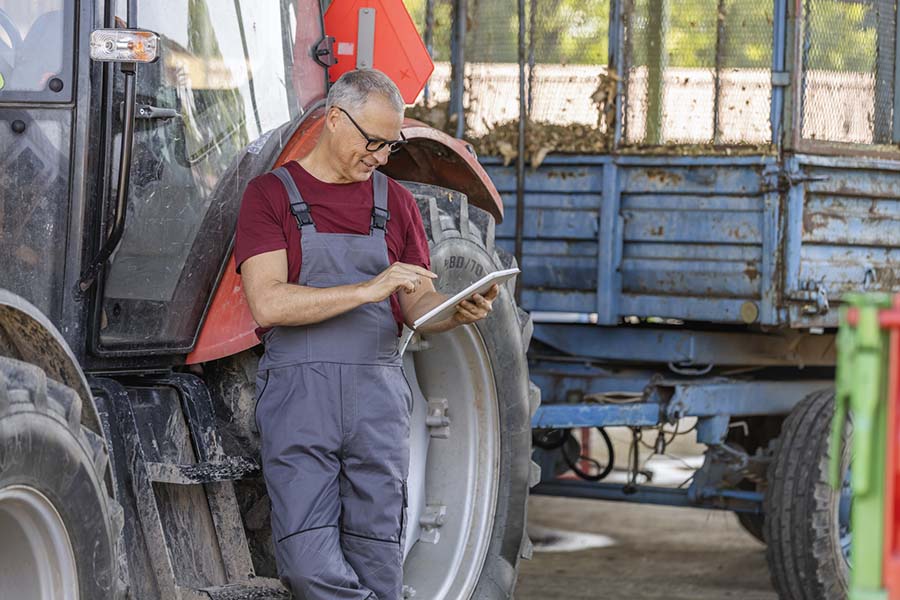Silage Covers Get a Modern Makeover
Farmers have always known how important it is to protect their fodder from the elements. Long before the advent of modern silage covers, farmers clearly understood the need to protect feed from rain, sun, and oxygen. Throughout history, farmers have used everything from thatching stacks with straw to burying silage pits underground to preserve precious winter feed stores. . Silage covers have been used for generations, but like anything else in farming, there’s always room for improvement.
Traditional modern covers do the job, but they’re not perfect. They can rip, tear, or break down in the sun, encouraging spoilage and wasting feed. The good news is that modern materials and technologies are making silage covers better than ever.
This chapter examines the latest and greatest in silage cover technology. It covers everything from high-tech materials to “smart” covers that can practically think for themselves.
What’s New in High-Tech Silage Covers?
Want to keep your silage in top condition? New cover materials are hitting the market that offer incredible performance, durability, and even environmental benefits. These aren’t your grandpa’s silage covers – they’re specially engineered to handle harsh weather, prevent deterioration, and keep your feed fresh longer.
Advanced Geomembranes: Tougher Than the Rest
Compared to traditional covers, advanced geomembranes are a significant leap forward in silage cover materials. Innovations in polymer technology have produced materials that are stronger, more flexible, and more resistant to punctures than previous options. Plus, they can handle troublesome chemicals like acids and alkalis that sometimes show up in silage runoff. To top it off, many geomembranes come with built-in UV protection to keep them from breaking down in the sun.
One example is BTL Liners’ ArmorCover line. These covers feature a unique reinforced design that uses layers of low-density polyethylene to surround a reinforced scrim of HDPE. They’re strong, tear-resistant, and lightweight, and they come with black and white sides to help regulate the temperature of your silage pile.
Keeping Oxygen Out: Oxygen Barrier Films
Oxygen is the enemy of good silage. That’s where oxygen barrier films come in. Made from specialized polymers like ethylene vinyl alcohol (EVOH) and polyvinylidene chloride (PVDC), these films create a virtually impermeable barrier that keeps oxygen out and helps eliminate the risk of spoilage by maintaining anaerobic conditions, reducing the growth of spoilage microorganisms and improving the silage’s aerobic stability. This means less waste, better feed quality, and improved animal performance.
Biodegradable Covers: Good for the Planet
As the public expresses growing concerns about plastic waste, researchers are working to develop biodegradable silage covers. Biodegradable covers would offer a more sustainable alternative to traditional plastic covers, reducing waste and minimizing the environmental impact of silage production.
Creating biodegradable covers that are as tough as their traditional counterparts is challenging, but progress is being made. Today, scientists are exploring promising materials like polylactic acid (PLA) and other plant-based polymers. Biodegradable covers may still be in the early stages of development, but they hold huge potential for making silage management more sustainable.
Weathering the Storm: Silage Covers Built to Last
Today’s silage covers are designed to enhance key performance parameters like durability, reliability, and weather resistance. Advanced materials will endure environmental stresses better for a longer service life.
Sun Protection: UV Stabilizers
Sunlight, especially the ultraviolet (UV) component, can be harsh on silage covers, causing them to become brittle and crack over time. This damage compromises their ability to protect the silage from oxygen and moisture. Increasingly, geomembrane manufacturers are incorporating UV stabilizers and other additives to combat this.
UV stabilizers absorb harmful UV radiation and convert the energy into a less damaging form before it dissipates into the environment. Some UV stabilizers can even scavenge and neutralize free radicals created by UV exposure that break down polymer chains. Think of it like sunscreen for your silage!
Weather Resistance
From scorching heat to torrential rain and howling winds, modern silage covers must endure it all. Fortunately, they’re made from advanced materials that can withstand extreme temperatures and resist tears and punctures, so your silage stays protected year-round, no matter the weather forecast.
Keeping the Elements Out
A good seal is essential for protecting silage from the elements. Some covers now have built-in sealing strips or special edge treatments that create a tighter seal around the silage pile. These features help keep air and moisture out, reducing the risk of decay and keeping your feed fresh.
Keeping Things Dry
Excess moisture can be a problem for silage, so some advanced covers are designed with special channels or grooves that help drain water and silage effluent away from the pile. This design prevents pooling and helps keep your silage from getting contaminated.
The Future is Now: Smart Covers and Automation
Advanced materials and enhanced performance features are impressive, but the future of silage cover technology might be even more exciting. Think “smart” covers and automation – technologies that could revolutionize how we manage silage.
Smart Covers that Talk Back
Imagine a silage cover that can give you real-time updates on the conditions inside your silage pile so you can respond to problems as soon as they appear. That’s the concept behind smart covers equipped with sensors and monitoring systems for tracking critical parameters like temperature, moisture levels, and gas composition within the pile.
In the future, sensor data will be transmitted wirelessly to your computer or phone, allowing you to make timely, data-driven decisions about silage management and adjust conditions within your silos to prevent losses.
Automated Cover Systems: Less Work, More Efficiency
Automation is another promising advance that can reduce labor, improve efficiency, enhance safety, and reduce operational costs.
For example, imagine an automated system that can deploy a silage cover over the pile, ensuring it’s correctly positioned and sealed, without you lifting a finger. Now imagine being able to do that remotely from your phone or computer. Eventually, automated cover systems could even be integrated with other farm management systems, like weather monitoring or feed management programs.
The Challenges and Opportunities of Smart Silage Technology
While these ideas hold enormous promise, there will certainly be hurdles to overcome:
Cost
Let’s face it: new technology can be expensive. The initial cost of these systems will likely be a barrier for some farmers.
Reliability
Silage storage often involves a harsh environment. Sensors and automated systems that can function reliably and accurately in these conditions will be crucial.
Data Management
Smart covers generate a lot of data. Farmers will need the right software, computing power, and expertise to effectively manage and interpret all that information.
Looking Ahead: A Bright Future for Managing Silage
The future of silage management is undoubtedly bright. As technology advances and costs decrease, innovations like these will become increasingly accessible and valuable. Imagine a future where silage covers can support more efficient livestock production by minimizing waste, maximizing feed quality, and practically maintaining themselves. This is a future worth investing in.




